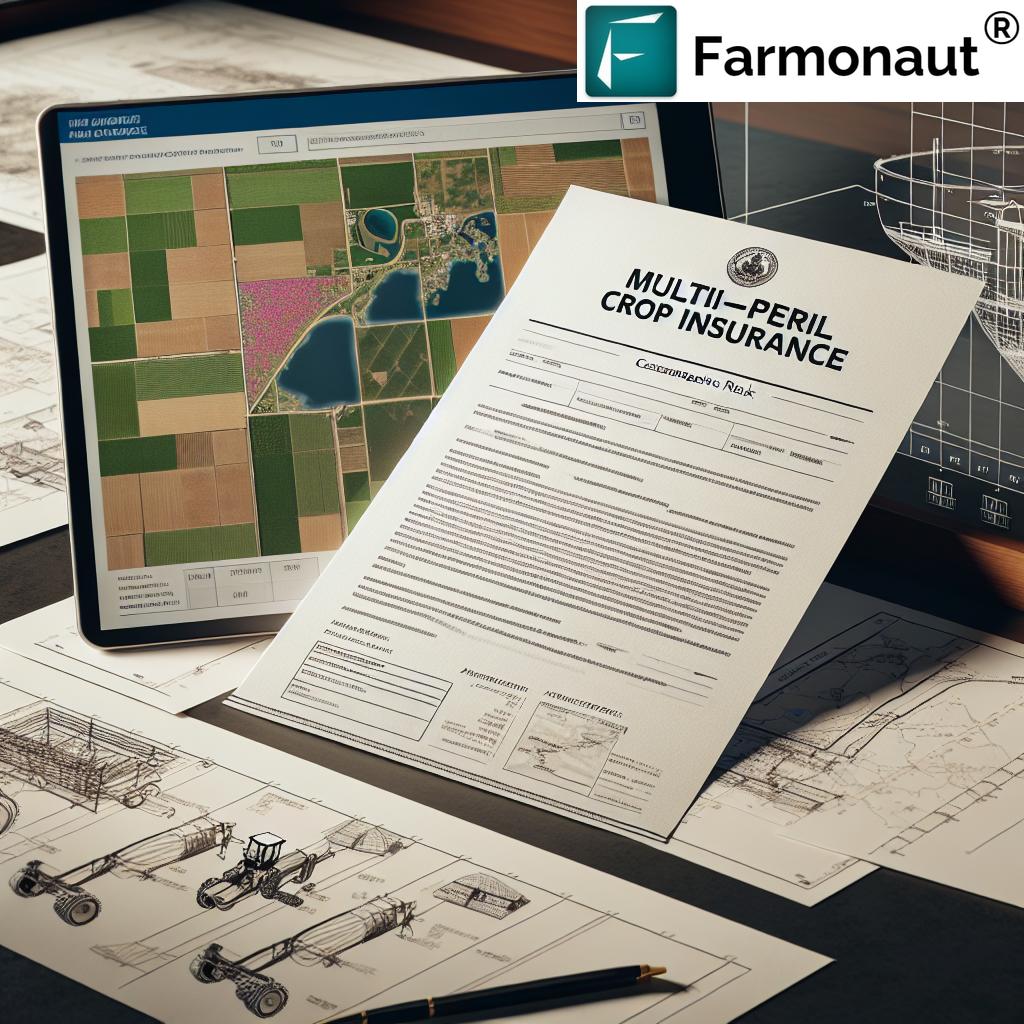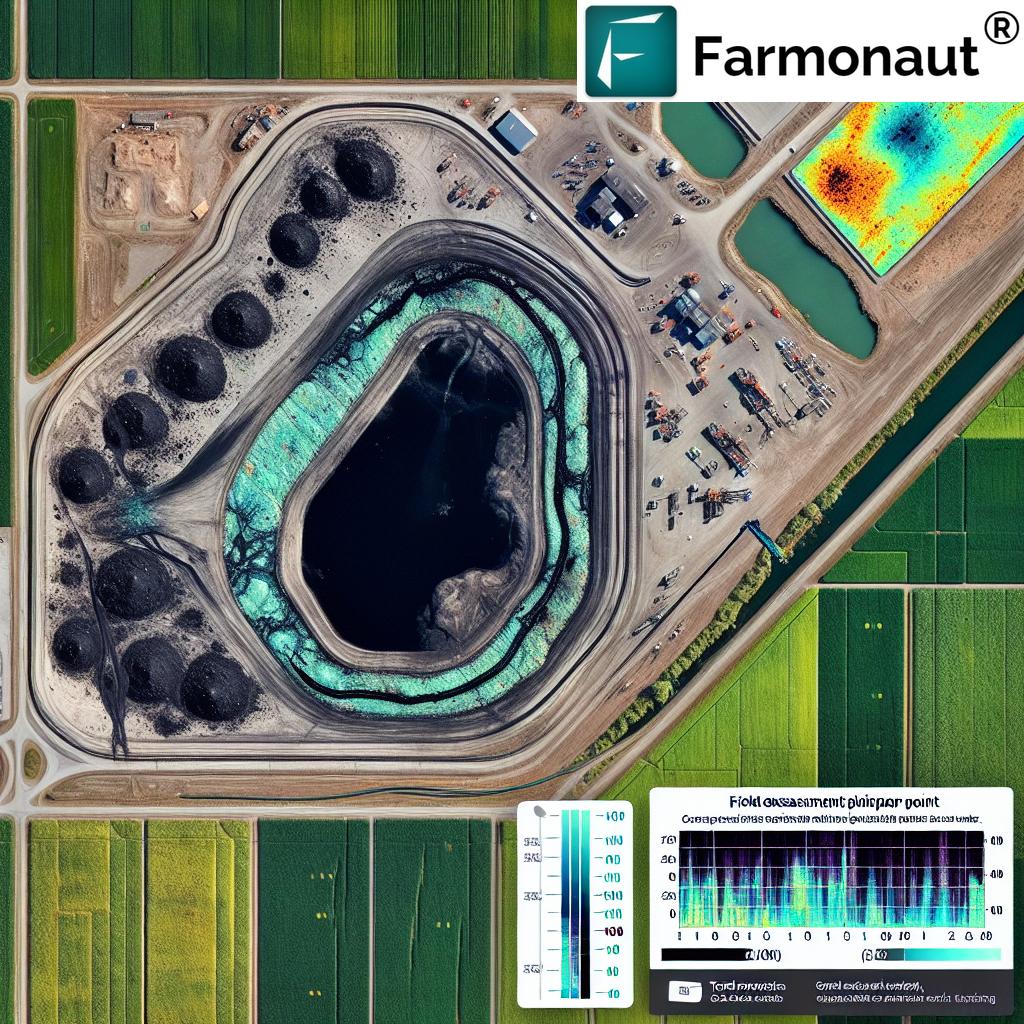Crop Insurance Policies: 7 Ways to Protect US Farmers
“Over 90% of U.S. farmland is protected by federal crop insurance programs against natural disasters and market fluctuations.”
Introduction: The Vital Role of Crop Insurance
Crop insurance is a cornerstone of agricultural risk management in the United States, shielding farmers from the unpredictable nature of natural disasters, severe weather events, pests, diseases, and volatile markets. As we focus on building resilient agricultural operations, understanding the breadth, function, and accessibility of modern insurance for crop losses becomes essential.
With more than 370 million acres covered by federal crop insurance programs in 2023, and over 90% of US farmland protected, our nation demonstrates a strong commitment to safeguarding both our food supply and the livelihoods of millions of producers. Let’s explore why crop insurance matters, how it functions, and which policies provide the most robust protection for US farmers.
Understanding Crop Insurance & Agricultural Risk Management
Agricultural production is fraught with risk—from droughts and floods to ever-evolving pests and fluctuating market prices. Crop insurance serves as a vital component of agricultural risk management, ensuring that farmers can weather unpredictable challenges without threatening the stability of their businesses or the food system at large.
By providing financial protection against potential crop losses due to unforeseen natural disasters, pest outbreaks, or diseases, insurance programs support farm incomes and contribute to the overall sustainability of the agricultural sector. These programs bridge the gap between good and bad years, mitigate income shocks, and instill confidence in long-term farm operations.
- Reduces the impact of weather volatility on farmers’ income
- Enables access to credit and financing by acting as collateral
- Supports timely replanting or recovery after catastrophic events
- Helps stabilize rural economies by ensuring ongoing production
This insurance coverage works through a collaborative framework between the federal government—primarily via the Risk Management Agency (RMA)—and private insurance providers, creating a comprehensive system for risk management.
Types of Crop Insurance Policies in the United States
The array of crop insurance policies available in the United States ensures protection for a wide range of crops and farming operations. The primary types of insurance, largely managed or overseen by the federal government, include the following:
1. Multi-Peril Crop Insurance (MPCI)
MPCI represents the most common form of federal crop insurance, providing farmers with comprehensive coverage against a wide range of perils such as drought, flood, hail, and disease. Under MPCI, farmers can insure a percentage (usually 50% to 85%) of their historical crop production, ensuring protection against both quantity and quality losses.
2. Catastrophic Risk Protection (CAT) Coverage
CAT coverage offers a basic, low-cost option for farmers. It compensates for yield losses exceeding 50% of a producer’s average historical yield—with a payment rate at 55% of the projected season average market price. While CAT coverage requires only a modest administrative fee per crop (usually $300), it provides limited protection and serves as a financial safety net for extreme crop losses.
3. Buy-Up Coverage
For those seeking higher protection levels beyond CAT, Buy-Up Coverage allows the purchase of additional insurance. This option supports farmers in customizing their coverage to address specific operational risks, and it is partially subsidized by the federal government, making it more accessible even for smaller operations.
4. Index-Based Crop Insurance
Index-based crop insurance, also called weather-index insurance, links payouts to measurable data—such as local rainfall, temperature extremes, or drought indexes—rather than individual on-field loss assessments. This alternative approach reduces the need for time-consuming evaluations and simplifies administration, which makes it a cost-effective solution for many types of crops and diverse geographies. Index-based policies are particularly valuable when traditional insurance may be less feasible.
5. Crop-Hail Insurance
Sold independently of federal programs by private insurers, crop-hail insurance supplements other coverage by targeting hail-specific losses. It is ideal for farmers operating in hail-prone areas and can be tailored to the unique risks faced by specialty or high-value crops.
6. Whole-Farm Revenue Protection
Whole-Farm Revenue Protection (WFRP) is designed for diversified operations. Rather than insuring specific crops, it guards a farm’s overall revenue based on historical production and projected earnings. WFRP is especially relevant for small and medium-sized farms producing a variety of commodities who wish to protect their total revenue stream.
7. Noninsured Crop Disaster Assistance Program (NAP)
Managed by the USDA’s Farm Service Agency, NAP supports producers growing crops not eligible for federal crop insurance (such as certain vegetables, fruits, or nursery crops). NAP provides financial assistance in case of losses from natural disasters, once losses surpass 50% of normal production. Producers must pay a service fee to enroll.
Comparative Table: Major US Crop Insurance Programs
| Policy Name | Type of Coverage | Coverage Level (% Range) | Eligible Crops | Estimated Premium Cost ($/acre) | Example Payout Scenario | Federal Support (% Subsidy) |
|---|---|---|---|---|---|---|
| Multi-Peril Crop Insurance (MPCI) | Yield/Revenue | 50–85% | Major row crops (corn, soybeans, wheat, cotton); specialty crops | $10–$35 | Drought reduces corn yield by 60%: payout covers revenue loss above deductible (e.g., $350/acre) | ~60–70% |
| Crop-Hail Insurance | Loss (Hail ONLY) | Up to 100% (supplemental) | All insurable crops; mostly row crops | $2–$6 (varies by hail risk) | Hailstorm destroys 40% of soybeans: direct payment for affected acres only | None (Private Only) |
| Whole-Farm Revenue Protection (WFRP) | Revenue (All Commodities) | 50–85% | Most crops; highly diversified farms | $20–$40 | Multiple disasters (low yields + market drop) cut overall revenue by 30%, payout fills revenue gap over deductible (e.g., $600/acre total farm) | ~55–67% |
| Catastrophic (CAT) Coverage | Yield (Severe Loss) | 50% yield/55% price | Most eligible crops | Admin fee ($300/crop) | Loss >50% from flood: payout at 55% of market price on lost production | 100% (No premium, just fee) |
“In 2023, U.S. crop insurance policies covered more than 370 million acres, safeguarding farmers from unpredictable risks.”
Crop Insurance: 7 Ways to Protect US Farmers
-
1. Safeguarding Against Natural Disasters
The most significant benefit of crop insurance for natural disasters is direct protection against losses from events like drought, flood, hurricanes, or hail. MPCI policies and index-based crop insurance quickly compensate farmers for yield or revenue losses, enabling them to recover and replant after a disaster—reducing long-term impacts on incomes and farm viability. These insurance types are vital for regions prone to severe weather.
-
2. Managing Market & Revenue Fluctuations
Beyond weather, farmers confront significant market price risks. Revenue coverage (like MPCI and WFRP) shields against sudden price drops or lower commodity values, providing financial stability and peace of mind in an uncertain market.
-
3. Supporting Farm Income Sustainability
Consistent insurance coverage helps stabilize farm incomes, ensuring operational continuity and the ability to invest in new technology, sustainable practices, or expansion. Insurance is more than disaster response—it is a proactive tool for ensuring the long-term sustainability of US farms.
-
4. Reducing Financial Risk for Lenders & Increasing Access to Credit
Lenders often require proof of crop insurance before approving loans. By lowering the financial risk, policies like MPCI allow farmers to access essential credit for seed, equipment, and operational costs. This encourages investments that enhance production, efficiency, and resilience.
-
5. Bridging the Gap During Rebuilding
After a disaster, immediate access to claim settlements can mean the difference between recovery and ruin. Policies that ensure timely compensation (through improvements in technology, satellite verification, and government oversight) reduce the hardship period, keeping farms operational.
-
6. Enabling Adoption of Precision Agriculture & Risk Management Tools
Many insurance programs now incorporate data-driven verification and precision agricultural management tools (such as satellite crop health monitoring from Farmonaut). These innovations reduce fraud, accelerate claims, and boost transparency—enhancing overall efficiency in the system.
-
7. Expanding Coverage for Specialty & Niche Crops
While certain specialty crops face coverage gaps, evolving policies and government programs (including NAP and recent buy-up options) are gradually extending insurance for crop losses to high-value fruit, vegetable, and organic producers. This ensures a broader safety net across American agriculture.
Government Programs & Subsidies for Crop Insurance
The overarching support of the federal government makes modern crop insurance coverage affordable, accessible, and wide-reaching:
-
Federal Crop Insurance Subsidies: The government covers a significant portion of insurance premiums—sometimes up to 70%, depending on coverage levels. This drives widespread adoption, reduces financial barriers, and enhances protection for millions of acres.
Fact: Insured acreage grew from 206 million acres (2000) to 494 million (2022)! - Noninsured Crop Disaster Assistance Program (NAP): For crops outside the scope of traditional insurance (like niche produce or organic crops), NAP offers financial assistance for losses due to natural disasters. Producers apply with a service fee, and payments issue once losses surpass half the expected yield.
- Role of the Risk Management Agency (RMA): RMA not only manages these federal programs but also ensures guidelines are followed and settlements are fair—a critical factor for maintaining public confidence.
Learn more about how Farmonaut supports satellite-based crop loan verification and insurance.
Satellite-driven data enables quicker, more accurate, and tamper-proof verification for both farm loans and insurance, reducing administrative costs and delays.
Are you an agribusiness or developer? Access Farmonaut’s API for seamless satellite and weather data integration—use our API developer documentation to get started!
Challenges and Critical Considerations in Crop Insurance
Despite widespread support for farmers insurance coverage, multiple challenges persist in the United States and global landscape:
Coverage Gaps & Specialty Crops
- Limited insurance options exist for specialty or high-value crops (e.g., some fruits and vegetables), organic products, or small-scale farms. These gaps can leave producers exposed to risks not covered by traditional programs.
Premium Costs and Financial Barriers
- While federal subsidies (crop insurance subsidies) reduce premium costs for most, higher coverage levels or non-standard policies can still represent a notable expense—especially for smaller farms or those with tight profit margins.
Claim Settlement Delays
- At times, delays in claim settlements can challenge farm recovery efforts and strain financial planning. Efficient administration is essential; leveraging technology and remote verification (like satellite data) can help reduce delays, ensure timely payouts, and enhance transparency.
Fraud & Verification Issues
- Fraudulent claims and inaccurate farm reporting can burden systems, increasing costs for all. Advanced solutions, like those providing satellite-based verification, are emerging as essential tools to promote fairness and reduce overall administrative overhead.
Farmonaut: Technology Empowering Insurance & Risk Management
As agricultural insurance systems evolve, technology is playing a transformative role in improving risk management, verification, and resource allocation. Farmonaut stands at the forefront of this technological revolution by making precision agriculture affordable and practical for farmers of every scale.
How Does Farmonaut Enhance Crop Insurance?
- Satellite-Based Crop Health Monitoring: Farmonaut uses multispectral satellite imagery to monitor vegetation health, soil moisture, and other variables. This real-time data assists farmers in detecting potential risks early, optimizing yield, and substantiating insurance claims with objective metrics.
- Jeevn AI Advisory System: This AI-driven platform combines satellite data with agronomic expertise to deliver personalized advice and strategies for risk mitigation, pest management, and optimal production—helping reduce overall loss exposures.
-
Blockchain-Based Product Traceability: Farmonaut enables comprehensive product traceability across the supply chain, increasing trust and reducing fraud in both agricultural supply and insurance for crop losses.
Learn more about Farmonaut’s traceability solutions for food safety and supply chain assurance. -
Fleet & Resource Management: Farmonaut’s platform helps agribusinesses control machinery, monitor fuel/resource use, and optimize logistics—contributing to greater efficiency and lower risk.
Explore our Fleet Management tools for large-scale farm and equipment oversight. -
Reducing Environmental Impact: Farmonaut’s carbon footprint tracking makes sustainability measurable and practical, supporting compliance and marketing in a world increasingly focused on green practices.
Discover our carbon footprinting services for climate-smart agriculture.
Farmonaut’s subscription-based platform is accessible via Android, iOS, and Web apps; it also offers API access for integration by larger organizations or developers. Its scalable design means services can be customized to individual farmers, cooperatives, large agribusinesses, and even governments seeking systemic modernization in farm management.
Global Perspectives on Crop Insurance Schemes
Crop insurance is not unique to the United States—many countries have implemented their own distinctive strategies to manage agricultural risk. Here’s how some other nations approach the concept of insurance for crop losses:
- India: The Pradhan Mantri Fasal Bima Yojana (PMFBY) provides a government-backed insurance scheme for farmers growing food, oilseed, and commercial crops. Despite program scale, challenges such as low enrollment and slow claim processing persist—similar issues faced by US programs.
- Romania: The government is developing major insurance systems to protect 7 million hectares against severe drought. Its scheme aims for broad subsidies and direct compensation, much like the US approach to federal support.
As climate volatility increases, countries worldwide are acknowledging the essential role of insurance and technology-driven risk management—including satellite verification, AI-based analytics, and blockchain for process transparency.
Frequently Asked Questions: Crop Insurance for US Farmers
1. What is the focus of federal crop insurance programs?
Federal crop insurance programs primarily seek to protect farmers from financial hardship caused by natural disasters, unexpected yield losses, and market fluctuations. They offer a safety net so growers can recover and remain in business after catastrophic events.
2. How do subsidies make insurance coverage affordable?
Federal crop insurance programs are heavily subsidized—meaning the government pays a portion of the premium cost. This makes coverage more affordable, encouraging higher participation and allowing even small or low-profit-margin farms to access essential risk protection.
3. What does “multi-peril crop insurance” actually cover?
Multi-peril crop insurance (MPCI) is designed to cover a broad range of perils: drought, flood, hail, excess moisture, disease, and more. It can include yield-based or revenue-based protection, safeguarding farmers from both physical loss and market risk.
4. Are all crops eligible for insurance coverage?
No. While most major row crops are eligible, some specialty, organic, or niche crops may have limited or no coverage under federal programs. The Noninsured Crop Disaster Assistance Program (NAP) provides an option for those crops.
5. How is claim settlement moving toward more transparency?
Technology—such as Farmonaut’s satellite-based crop health data—is increasingly used for faster, more transparent, and accurate claim verification, reducing fraud and minimizing settlement delays.
6. How can US farmers access Farmonaut solutions for crop insurance or farm management?
Farmers can use the Farmonaut web, Android, or iOS Apps to access real-time farm insights. APIs are available for developers or large organizations wishing to integrate satellite and weather data into their systems.
7. What’s the future of crop insurance and risk management?
The future involves expanding coverage to more crops, speeding up claim settlements, using AI and satellite images for more precise verification, and enhancing sustainability through carbon tracking and traceability platforms.
Farmonaut Subscription Plans
Farmonaut offers flexible subscription packages for individual farmers, agribusinesses, research organizations, and government users. Select from affordable plans based on the number of hectares, frequency of data updates, or advanced features like AI advisory and blockchain traceability.
Conclusion: Protecting Farmers and Ensuring Sustainable Agriculture
Crop insurance is a proven safeguard—mitigating financial risks, stabilizing farm incomes, and securing the nation’s food supply chain against the unpredictability of natural disasters and volatile markets. Modern programs blend government support, private expertise, and satellite-powered technologies, offering comprehensive risk management for farms of every size and type.
As we move forward, continued innovation, improved accessibility for specialty and small-scale crops, and enhanced efficiency in claim processing remain critical. Integrating platforms like Farmonaut not only streamlines risk management and verification but also sets the foundation for sustainable, transparent, and resilient farming operations—today and for generations to come.
Empower your farm with real-time risk monitoring, smarter management, and faster insurance verification—get started with Farmonaut today.


















